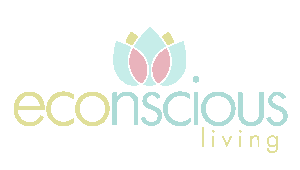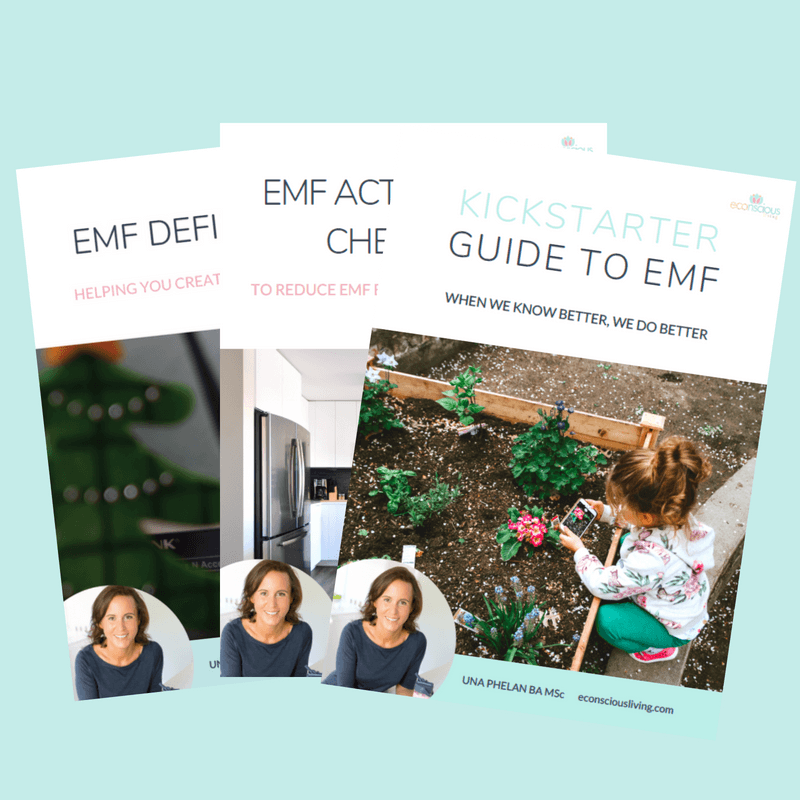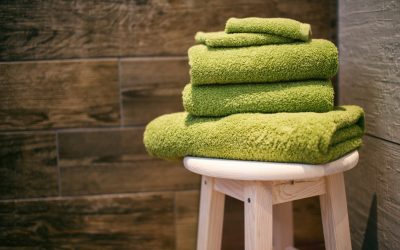The Toxic Chemicals in Cleaning Products Revealed
Given the popularity of my recent blog on the harmful ingredients found in skincare products, I thought it timely to hit you with something similar for cleaning products: revealing the toxic chemicals in cleaning products that you should be aware of and checking for.
After reading that previous blog, you might find it hard to believe that regulation around cleaning products is actually worse than that of skincare and personal care products (which is barely existent).
Cleaning products by law do not need to list ingredients on the label.
Only 3% of the 10,000 new chemicals that come onto the market annually in Australia are assessed by our national regulator; the National Industrial Chemicals Notification and Assessment Scheme (NICNAS).
As if this isn’t bad enough, a bill was introduced last year by Assistant Health Minister David Gillespie and if it goes through, the industry will effectively be allowed to self-assess whether a chemical new to Australia is low-risk and therefore “exempt”. This means it could be brought to market without being reported to the regulator or having its safety assessed. The Bill proposes that less than 1% are actually assessed.
About 30,000 chemicals used in Australia since before the regulatory scheme began in 1990 have yet to be assessed at all. These are the same chemicals that you are using in your cleaning products every day.
By cleaning products I’m referring to surface sprays, oven cleaners, bathroom cleaners, floor cleaners, wood polish, dishwashing and laundry detergents and on and on.
A recent extremely well-conducted Norwegian study found that cleaning just once a week, over a 20-year period, can cause significant lung damage. It found professional cleaners can develop lung damage similar to somebody who smokes 20 cigarettes a day over 10-20 years.
Our environment is also affected. Phosphates run-off into our water, creating algal blooms and suffocating aquatic life. Triclosan (an anti-microbial which acts similar to an antibiotic) found in many household products is also harmful to aquatic plants. There is strong evidence that fish, aquatic plants and other aquatic life are even more sensitive to triclosan than humans.
You may genuinely be mistaken in the belief that someone has your back or the health of the environment in mind when it comes to purchasing cleaning products. Nope!
So to keep you on the right track, here are some tips on how you can keep both the environment and yourself healthy.
The cleaning product industry just like the skincare industry is effectively self-regulating. Below I give you some quick tips so you can quickly eliminate most of the nasties in your cleaning regime!
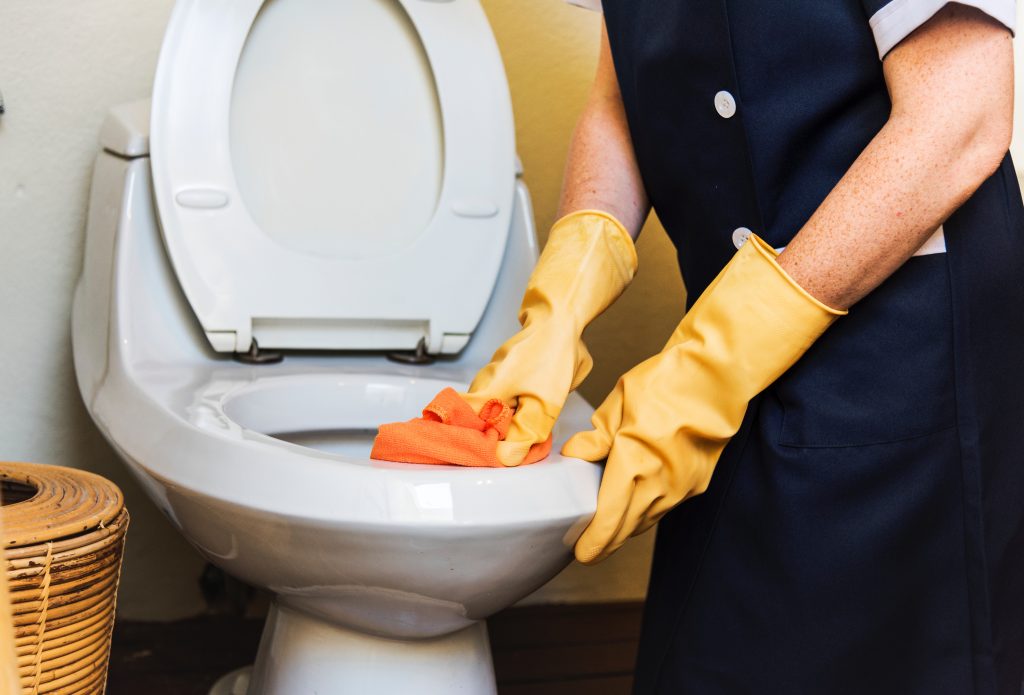
Ways to avoid the toxic chemicals in cleaning products
1. Avoid the supermarket
It is rare to find consistently good products in a supermarket or a bargain store for that matter. Keep away until you have gained more confidence in reading labels. The larger or more boutique style supermarkets will have a much better range but as with skincare, one product in a range might be good but another not so much.
2. If no ingredients list is shown put it back.
This one simple step will likely lead you to a non-toxic or a low toxicity brand. Brands that are trying to do the right thing quite simply will tell you what is in their product. Why even support companies that don’t disclose this crucial information?
Now, if you have some products at home and you want to check their toxicity before deciding whether or not to move on, there are a few steps you may need to take. Go to the brand’s website and look for the ingredients list or failing that contact them for the information. Another way is to look up the Material Safety Data Sheet (MSDS) for that product. Even this may not tell you very much so then you need to look up each individual MSDS for each ingredient listed. It’s a hassle, right? So next time avoid a product that tells you nothing.
3. Avoid long ingredient lists with unpronounceable chemicals
The shorter the list of ingredients the more promising. Well-intentioned brands will even go one step further than just listing their ingredients -they will actually clarify what they mean in parenthesis. For example, Sodium Carbonate (baking soda) or Sodium Coco-Sulphate (plant-based surfactant).
4. Look out for toxic symbols on the label
If a label has a poisonous skull and crossbones sign it’s not good for you. Other symbols to avoid include those indicating the product is corrosive, flammable, explosive etc. Why would we even think of slathering our surfaces or floors in products that our children or pets crawl on or eat food from? That leads me to the toxic and ever pervasive bleach.
5. Avoid Chlorine, Ammonia and Sodium or Potassium Hydroxide
Bleach is a highly toxic and corrosive agent made from sodium hypo-chloride, that is chlorine. Bleach is commonly used as a disinfectant and laundry detergent. Chlorine is also commonly found in whitening agents as well as bathroom, mould and toilet cleaners.
It is a known skin, eye and respiratory irritant. Studies show it can be carcinogenic when inhaled and it exacerbates allergies, especially in children. Chlorine gas was used as a chemical weapon during World War 1. Soldiers drowned in the trenches suffocated by the fumes.
Ammonia is another toxic chemical found in window, oven and floor cleaners. Its effects are similar to those of chlorine and it also leads to asthma.
Sodium or potassium hydroxide are more corrosive agents found in most bathroom and oven cleaners. Again, they will irritate your eyes, nose, throat and lungs.
On top of all this, there is no assessment done on how one ingredient interacts with another making them even more toxic. Nor is there any consideration given to mixing one of your cleaning products with another. For example, if a chlorine-based product such as bleach, is mixed with an acidic or ammonia cleaning agent (such as a scourer) an even more toxic compound is formed: chloramine gas.
6. Be Wary of Formaldehyde
Formaldehyde is classified as a known carcinogen by the International Agency for Research on Cancer (IARC). It’s also suspected of causing birth defects. Yet as stated by NICNAS it is found in small amounts in household products. This includes household cleaners, disinfectants and fabric softeners. Of course, you will never find it listed on a product label so the best thing you can do is avoid products that don’t list ingredients.
7. Avoid Artificial Fragrances and Surfactants
Surfactants are known skin irritants and are commonly found in dishwashing and laundry detergents. Those most commonly used are Sodium Lauryl Sulphate (SLS), Sodium Laureth Sulphate (SLES) and Cocamidopropyl betaine (coco betaine) and should be avoided. Artificial or synthetic fragrances can contain hundreds of chemicals, and none of them are listed on the packaging. They don’t need to be, as they are deemed ‘trade secrets’. The problem is they are also linked to hormone disruption in the body. Look for phthalate-free or fragrance-free products. I discuss these more in my skincare blog. Doesn’t it say it all when we are cleaning our floors with many of the same ingredients we are cleaning our face with?
Like it? Pin it for later!
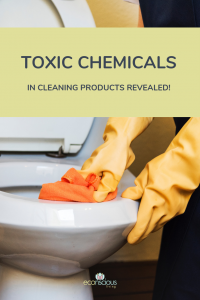
8. Download the EWG and/or Chemical Maze apps
Once you have an ingredients list, check how safe they are by using the EWG app (free) and/or the Chemical Maze app.
9. Don’t Get Greenwashed
Greenwashing is the overstating of a brand’s green or ethical credentials and the understating of the negative. Don’t fall for the pretty flowers or the fluffy bunny. You need to dig a bit deeper to find out if they are truly green. A good example of this is the brand Earth Choice found in most supermarkets.
Let’s recap!
1. Don’t buy products in the supermarket.
2. If it doesn’t have an ingredients list put it back.
3. Avoid long ingredient lists with unpronounceable names.
4. Look for toxic symbols on the ingredients label.
5. Avoid Chlorine, Ammonia and Sodium or Potassium Hydroxide.
6. Be wary of Formaldehyde.
7. Avoid SLS, SLES, Cocamidopropyl betaine and artificial fragrances.
8. Download the EWG and/or Chemical Maze apps.
9. Don’t get greenwashed.
What are your healthier, greener options for household cleaning products?
The cheapest option is to make your own cleaning products. It’s actually super easy and you’ll save yourself a few hundred dollars a year. Reuse a few glass bottles and pop a spray-top on. Baking soda is great for cleaning and white vinegar is an anti-bacterial agent. You can add a lemon and some essential oils if you wish.
Castille soaps are also multi-purpose and you can just about it use these for anything.
Only buy products that have an ingredients list. Aim for those that are labeled 100% natural, biodegradable or plant-based. They should be free of bleach, chlorine, ammonia, sodium or potassium hydroxide, artificial fragrances, phosphate and triclosan.
Reduce the number of products you use and never use conventional aerosols or sprays. If you can find refillable cleaning products, all the better – many health or bulk food stores now stock these. Look for concentrated cleaners that you can dilute when you get home.
Damp microfibre cloths are also excellent for cleaning and dusting eliminating the need for chemicals at all.
Where to shop for cleaning products?
Local health and organic shops are a good source of products. Great online shops include Flora and Fauna and Biome. Some of the brands I use include Koala Eco, The Family Hub and Mother’s Way. Find brands you love and stick to them.
Would you like help working it all out? Book in for my healthy home detox where I go through it all with you and even restock your home with non-toxic cleaning products!
References
Related Posts
The Best Natural Pillows For Better Sleep
If you truly want to make a simple upgrade in the bedroom that will change your health then keep reading to find the best natural pillows for better sleep
Why You Should Have a Home Sauna for Better Health
Quite simply if there was a pill that did ALL the things that research is showing us saunas do, you would be taking it. Here’s why and my recommendations
Myth Busting: How Effective Are Air-Purifying Plants?
It’s a common belief that air-purifying plants are an effective way of removing VOCs and toxicants from the air in your home. I’m afraid not, here’s why…
